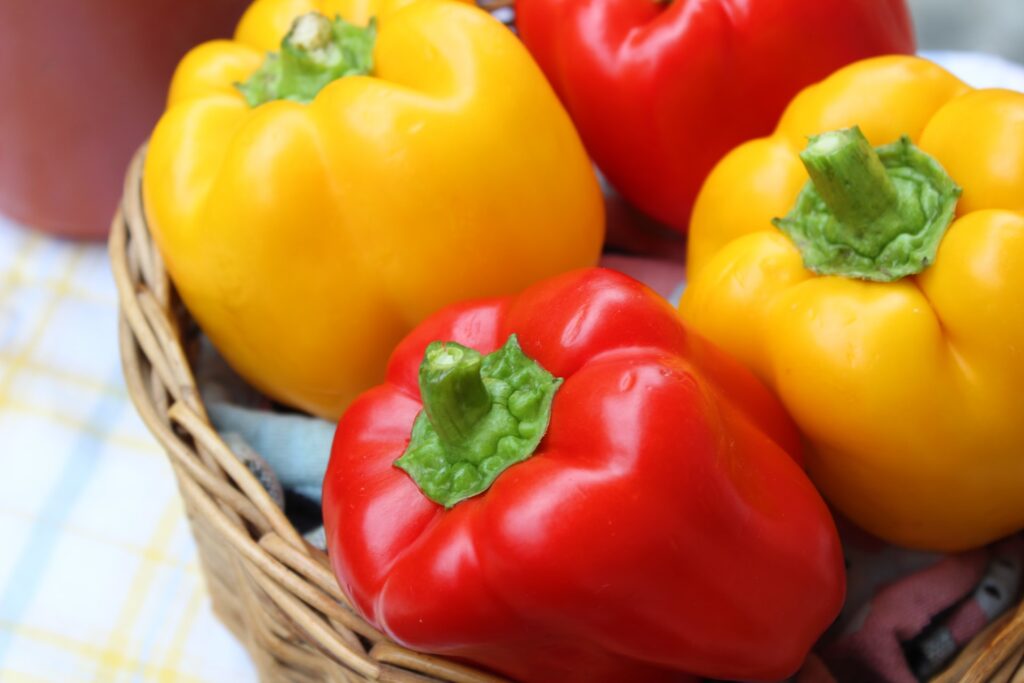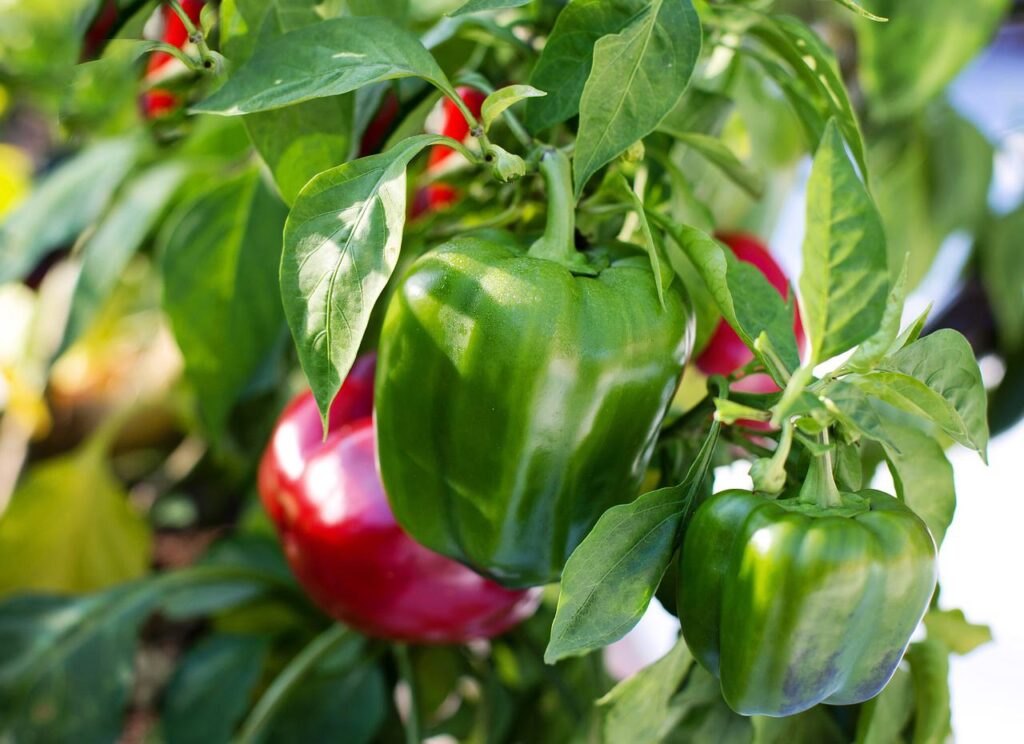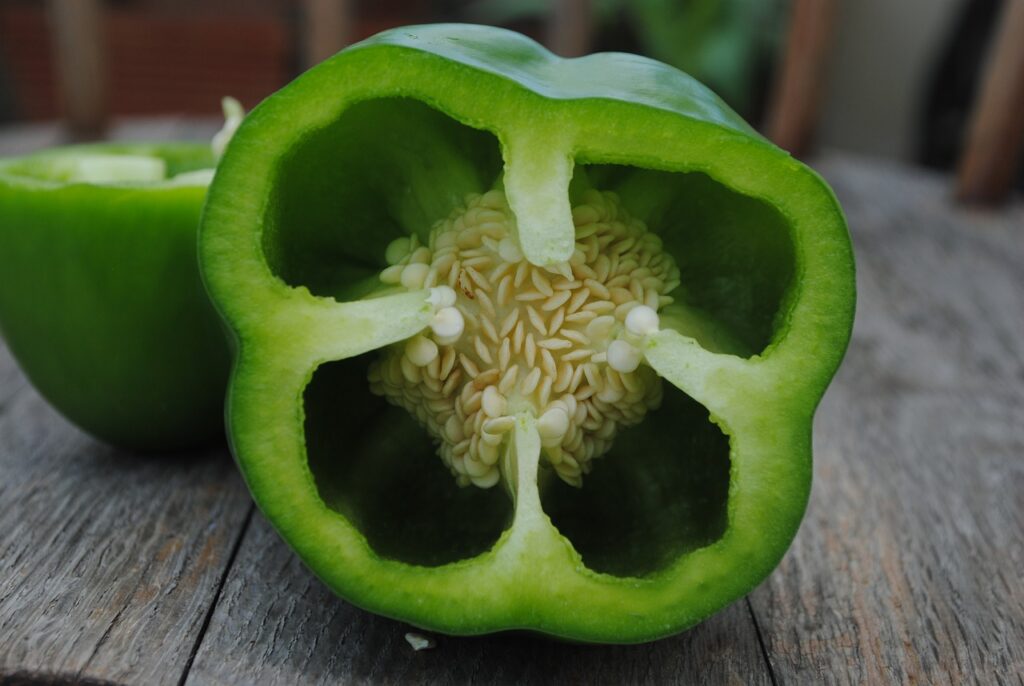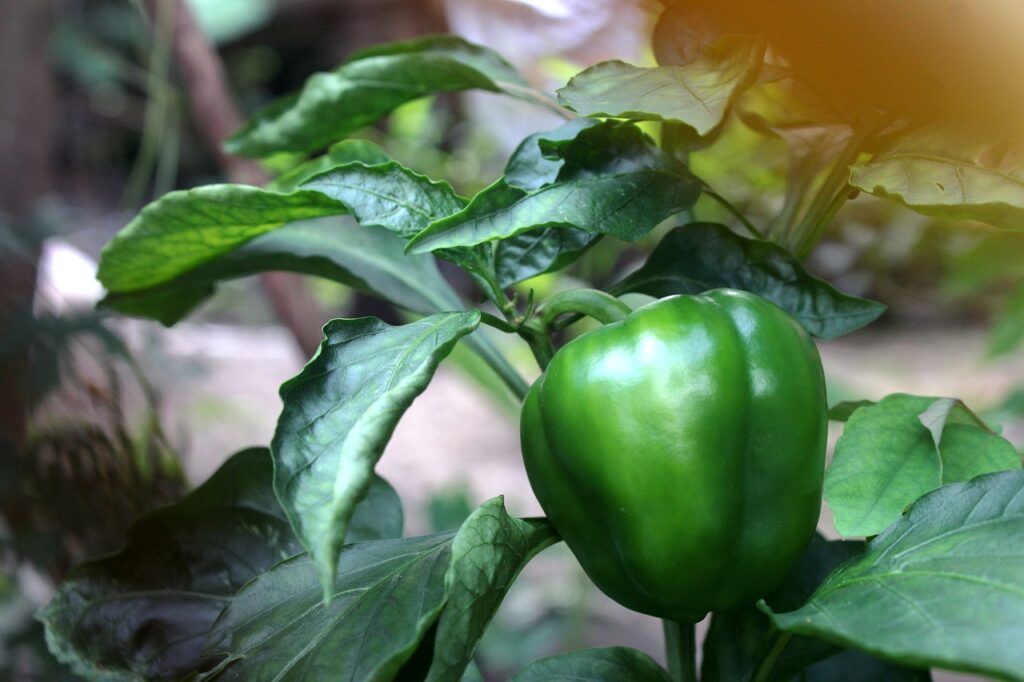The Capsicum plant is a very popular vegetable. They are grown for their beautiful bright colours, delicious taste, and always firm texture. This article provides a comprehensive introduction to Capsicum plants, also known as bell pepper plants, including unique features and full growing instructions to help you grow your own at home.
Introduction – The Capsicum Plant
The Capsicum plant (Capsicum Anuum) or Bell Peppers are part of the nightshade family and originate from Central and South America. They are also related to chili peppers, tomatoes and breadfruit. Bell pepper plants can thrive in cold temperatures as well as tropical areas and are relatively easy to grow. They have a wonderful taste and look stunning when they ripen. They produce seeds that can be used to grow new plants and make a great addition to the home vegetable garden.
So let’s take a look at the best time for planting, how much space they need, the best growing conditions and other features you need to be aware of to successfully grow your own pepper plants.

Is capsicum easy to grow?
Yes! Capsicum plants are pretty easy to grow. They can be grown in a pot or in the ground, but their optimal environment will include direct sunlight most of the time and some enriched soil, with compost or decomposed manure added.
They will need regular watering for optimal plant growth and fruit development, and a good quality mulch will also be beneficial for ensuring the soil stays moist.
Growing peppers is perfect for gardening beginners as success rates are usually pretty high.
What is the best time to plant capsicum?
The best time to plant capsicum is in early spring, as the soil has warmed up a little, as well as through summer if you are in a warm or colder climate.
They generally do not like the frost of colder seasons or colder climates.
In tropical climates, bell pepper plants can be grown almost all year round.
Does capsicum need full sun?
Yes, pepper plants do better with intense sunlight, unless the temperatures are reaching 38 degrees Celsius or higher. If possible, avoid planting them where there is too much shade since this can lead to lower quality flowers and leaves.
Abundant plants will naturally shade lower hanging fruit with healthy growth of leaves and fruits above. If temperatures are soaring high, consider shading the plant as they can experience sunburn or flower drop in high temperatures.

How long does a capsicum plant live?
Depending on the variety, they can live for 2-6 years in total, but it is generally agreed that the average life of capsicum from seed is 1 to 5 years.
If they are neglected or fall victim to garden pests, infected plants may not recover and may need to be destroyed. With the right growing conditions, healthy plants can continue to grow and produce year after year.
Capsicum plants are perennial. This means that they will fruit and grow the following year, a lot of the time.
How tall does a capsicum plant grow?
According to most growers and researchers, Capsicum plants can grow up to 50 cm in height. However, this is not a hard and fast rule. Different varieties grow differently when it comes to height, and some can grow as high as 60 cm or even 90 cm if they are well grown. The capsicum plant will have flowers (or fruiting parts of the plant) at its top, which are approximately 2-5 inches in size.
Therefore, when they start growing in the soil, they can grow 5-6 feet tall in most cases. They can get much taller than this if they are well taken care of and if the soil is enriched with organic matter. It does not matter how tall the plant grows as long as the fruits are developed at their top, which you will use for consumption.
Can you grow capsicum from the seeds inside?
Yes. Bell pepper seeds can be used to produce new plants!
- Start seeds in a seed tray for propagating. If it’s a cool climate, you could have the seeds indoors.
- Use a good quality soil mix for seed raising and sow in individual cells
- Push seeds down to a depth of about 5mm and give them a water
- Soil will need to be moist but not too saturated
- It should take about 2-3 weeks before you start to see seedlings
- When seedlings have a few leaves, they can be planted out into larger pots or into the ground, using enriched soil
- You may need to stake some plants if they are getting too big or producing a lot of fruit

How often should I water my capsicum plant?
Capsicum plants will require daily watering but it is best that you avoid overhead watering and make sure you water deeply by concentrating on the base and the roots, rather than the foliage. This will help to ensure healthy plants and avoids diseases and garden pests such as aphids and flea beetles, both of which love bell pepper plants.
The soil will need to remain moist, so that’s why using good quality mulch is a good idea, however you also don’t want your pepper plant to have wet feet as this can cause blossom end rot. Blossom end rot can also occur due to lack of calcium in the soil.
It’s recommended to apply some Seasol or other seaweed solution every couple of weeks to flowering plants to aid in the fruit production.
Are red peppers and green peppers from the same plant?
Red peppers and green peppers are actually just at different stages of maturity! Plants will produce peppers that start out as green, and can most definitely be harvested as a green pepper (though the green pepper tends to be one of the more pungent fruits), and if you leave the peppers on the plant for longer, they will mature into red bell peppers, and the red bell peppers are quite a sweet pepper compared to the green ones.

“Green peppers are harvested earlier, before they have a chance to turn yellow, orange, and then red. Compared to green bell peppers, the red ones have almost 11 times more beta-carotene and 1.5 times more Vitamin C.”
Barbara Brody – WebMD.com
How far apart should I plant capsicum?
It’s a good idea to space your pepper plants about 50-60cm apart. Young plants will not need the space for a while but as they mature, the roots will need this space for healthy development and to ensure decent fruit size.
Do capsicum plants grow better in pots or the ground?
Capsicum plants can be grown successfully in pots or in the ground, as long as they have the right growing conditions of direct sunlight, plenty of watering, good quality potting mix with some compost or manure, perhaps some dark mulch and enough space to grow and spread.
In fact, in tropical climates, seeds can be sown directly in the ground, rather than the requirement to start seeds indoors or in individual covered cells.
If you’re wanting to look at a companion plant for your pepper plant, some good varieties include herbs such as basil, parsley, dill, chives, rosemary or oregano. These all have various qualities of either repelling garden pests or attracting particular wasps or other insects that feed on those pests.
Summary – The Capsicum Plant
Bell pepper plants, or capsicum plants are fairly easy to grow. Choose a sunny spot and make sure you consider the best growing season for the climate in which you live, to ensure optimal growth.
Pepper plants are so versatile for inclusion in many recipes and are also good for eating raw.
Make sure you have some good soil and some good mulch ready and you have considered how much space they may need. You could even include them as part of a community garden!
Have you tried growing Capsicum plants? Let us know how successful you were!



